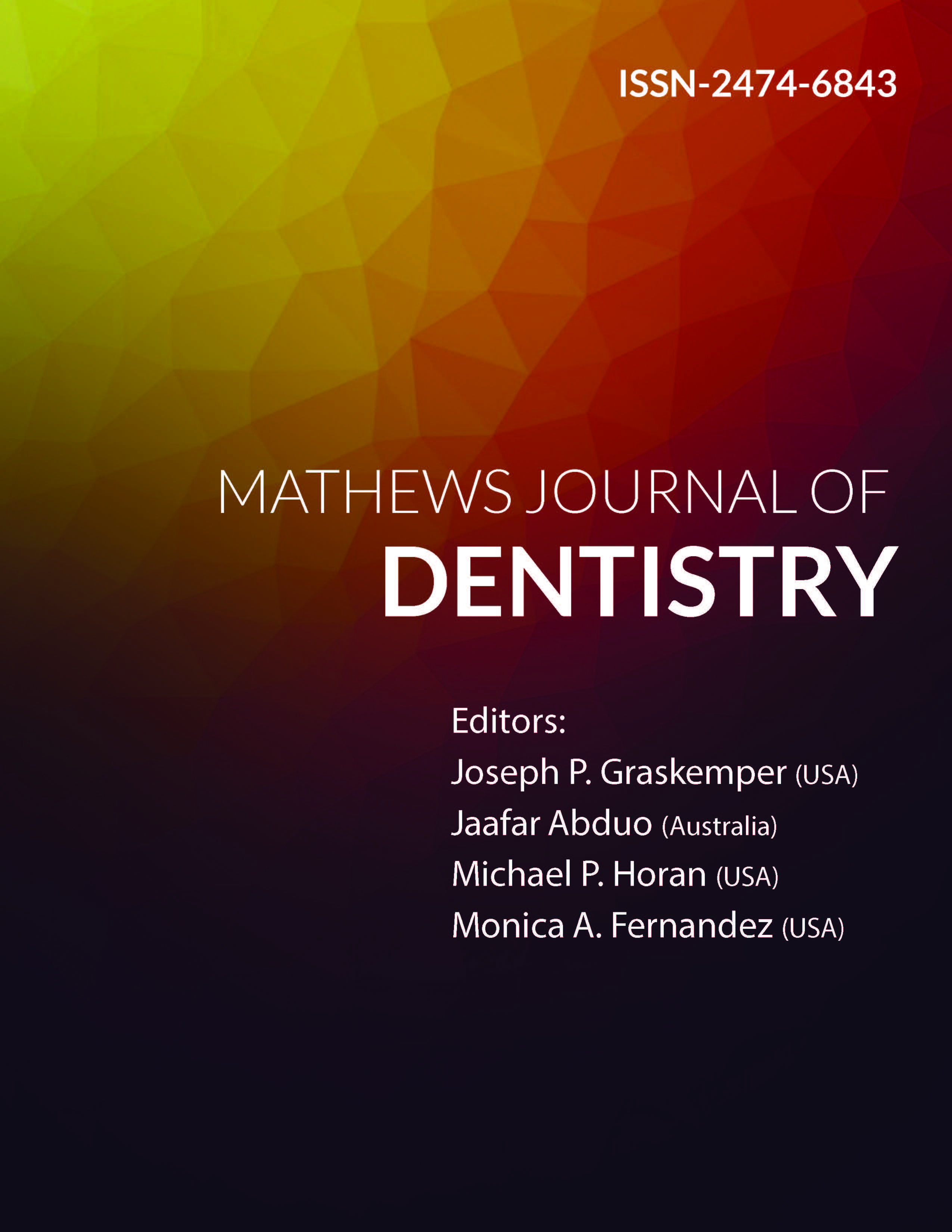
Information Links
Previous Issues Volume 7, Issue 3 - 2023
The Effectiveness of Guided Implant Placement and Bone Regeneration in the Aesthetic Area. Implant Therapy–A Case Report
Louati Moataz1,*,Bouslama Afif2, Gargouri Rania1, Oualha Lamia3 and Douki Nabiha3
1Department of Dentistry, University Hospital, Sahloul, Tunisia Faculty of Dental Medicine, University of Monastir, Avicenna Street, 5000 Tunisia. Research Laboratory LR12ES11, University of Monastir, Tunisia
2Associate Professor, Department of Dentistry, University Hospital, Sahloul, Tunisia Faculty of Dental Medicine, University of Monastir, Avicenna Street, 5000 Tunisia. Research Laboratory LR12ES11, University of Monastir, Tunisia
3Professor, Department Head of Dentistry, University Hospital, Sahloul, Tunisia Faculty of Dental Medicine, University of Monastir, Avicenna Street, 5000 Tunisia. Research Laboratory LR12ES11, University of Monastir, Tunisia
*Corresponding Author: Dr. MoatazLouati, DDS, Department of Dentistry, university hospital, Sahloul, Tunisia Faculty of Dental Medicine, University of Monastir, Avicenna Street, 5000 Tunisia. Research Laboratory LR12ES11, University of Monastir, Tunisia; Tel: +21623406096; Email: [email protected]
Received Date: August 12, 2023
Publication Date: October 24, 2023
Citation: Moataz L, et al. (2023). The Effectiveness of Guided Implant Placement and Bone Regeneration in the Aesthetic Area. Implant Therapy–A Case Report. Mathews J Dentistry. 7(3):38.
Copyright: Moataz L, et al. © (2023)
INTRODUCTION
The anterior maxilla is the most likely site to experience dimensional changes as a result of tooth loss due to trauma, periodontal disease, caries, etc. This bone atrophy of the edentulous ridge can present both functional and aesthetic challenges, and often requires preoperative or intraoperative bone augmentation surgery [1].
A wide range of bone augmentation materials have been proposed in the literature, including autogenous bone, xenografts, allografts, and alloplastic materials. However, autogenous bone is still considered the gold standard for bone augmentation [2].
The international consensus emphasizes that the aesthetic and functional success of dental implants depends essentially on the three-dimensional positioning of the implant, regardless of the implant system, bone augmentation materials, or surgical technique used [3].
Digital implantology, particularly guided implant surgery, offers numerous benefits. It simplifies surgical procedures, ensuring precise three-dimensional implant placement and optimizing clinical outcomes. Digital planning allows for accurate diagnosis of the implant site and virtual visualization of the final restoration. It also reduces surgical time and lowers complication rates. These advantages contribute to the steady growth and increasing interest in digital implantology [4].